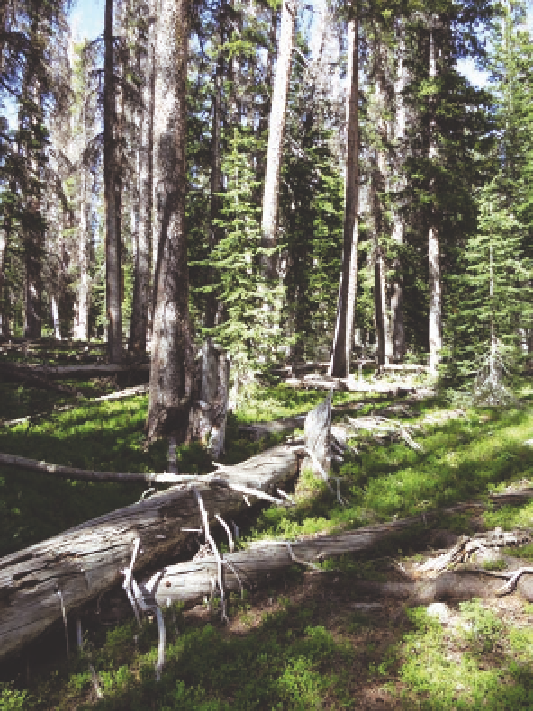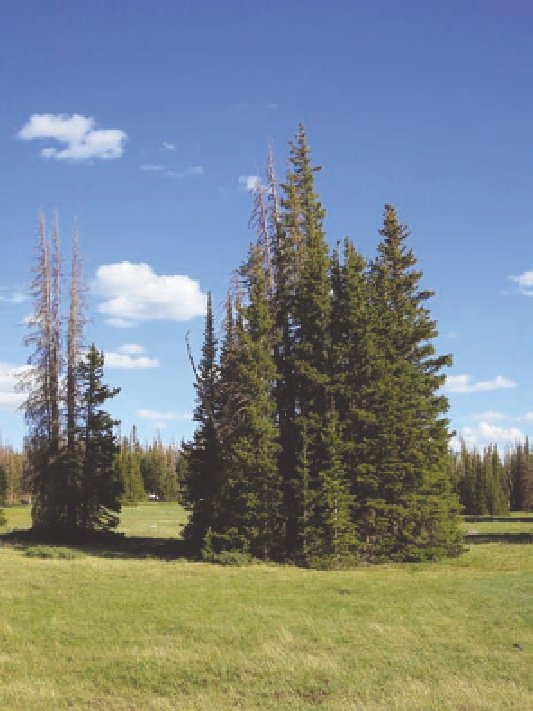Geoscience Reference
In-Depth Information
Fires are less frequent in the spruce-fir zone than in
the lodgepole pine zone, because of even wetter con-
ditions in the subalpine environment. Many spruce-fir
forests persist for centuries without fire. For example,
a tree-ring-based fire history study in a 75,000-acre
subalpine portion of Rocky Mountain national Park
recorded no significant fires during the previous 400
of few fires was true before the advent of efforts to put
them out, but those that did occur, and that occur
today, tend to be very hot and stand-replacing, just as
in lodgepole pine forests.
All four tree species in subalpine forests—spruce, fir,
aspen, and lodgepole pine—may become established
rapidly after a fire, depending on the availability of seed
Fig. 11.18. occasionally subalpine fir and engelmann spruce
develop clones, such as the two shown here. this occurs when
lower branches are pressed against the ground by snow and
new roots begin to grow, a process known as layering. A new
tree then develops from the rooted branch. Meadow plants at
this site in the Medicine Bow Mountains include alpine bis-
tort, alpine timothy, and idaho fescue. elevation 10,400 feet.
Fig. 11.17. Subalpine forests dominated by engelmann spruce
and subalpine fir are common at higher elevations, such as in
this area in the Medicine Bow Mountains. note the presence
of downed wood, small and large trees, and the continuous
fuel ladder from the understory to the canopy. the spruce
beetle, a native insect, has recently killed many large trees in
this stand. the bright green plant in the understory is dwarf
huckleberry, an indicator of a relatively cool, moist environ-
ment. elevation about 9,000 feet.
pine and Douglas-fir also are better adapted to the lower-
elevation environment.
Unlike the pines and Douglas-fir, spruce and fir are
capable of vegetative reproduction when lower branches
are pressed to the ground by snow or a fallen log. the
branch then develops roots, known as adventitious
roots, after which the end of the branch begins to grow
upright into a new tree. eventually the branch's connec-
tion to the parent tree is severed by death of the initiat-
ing branch and its decomposition. this process, known
as
layering,
produces clones of the original tree that are
commonly found locally at higher elevations. clusters
of subalpine fir in meadows often can be attributed to
this cloning process (fig. 11.18).


Search WWH ::

Custom Search